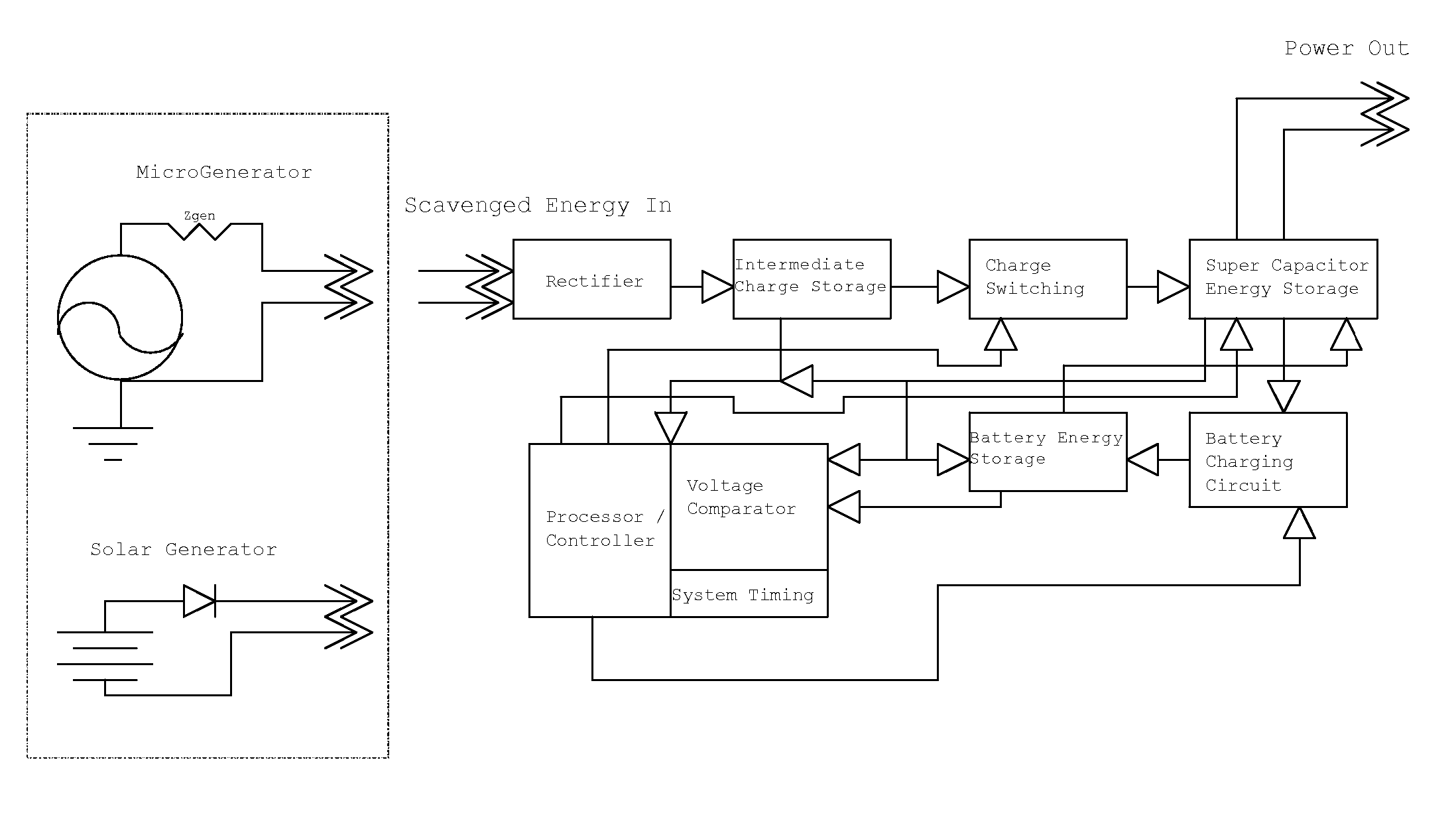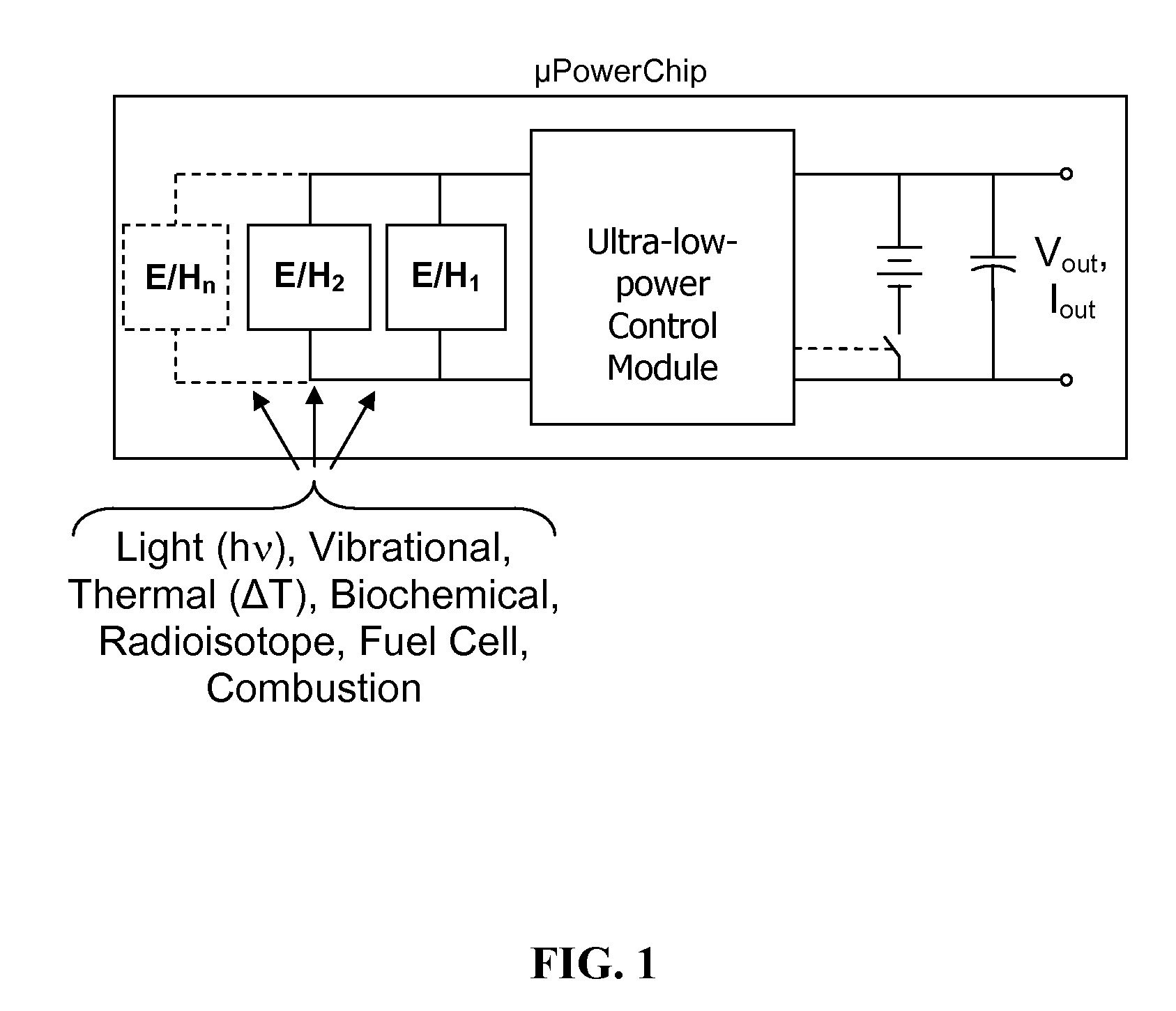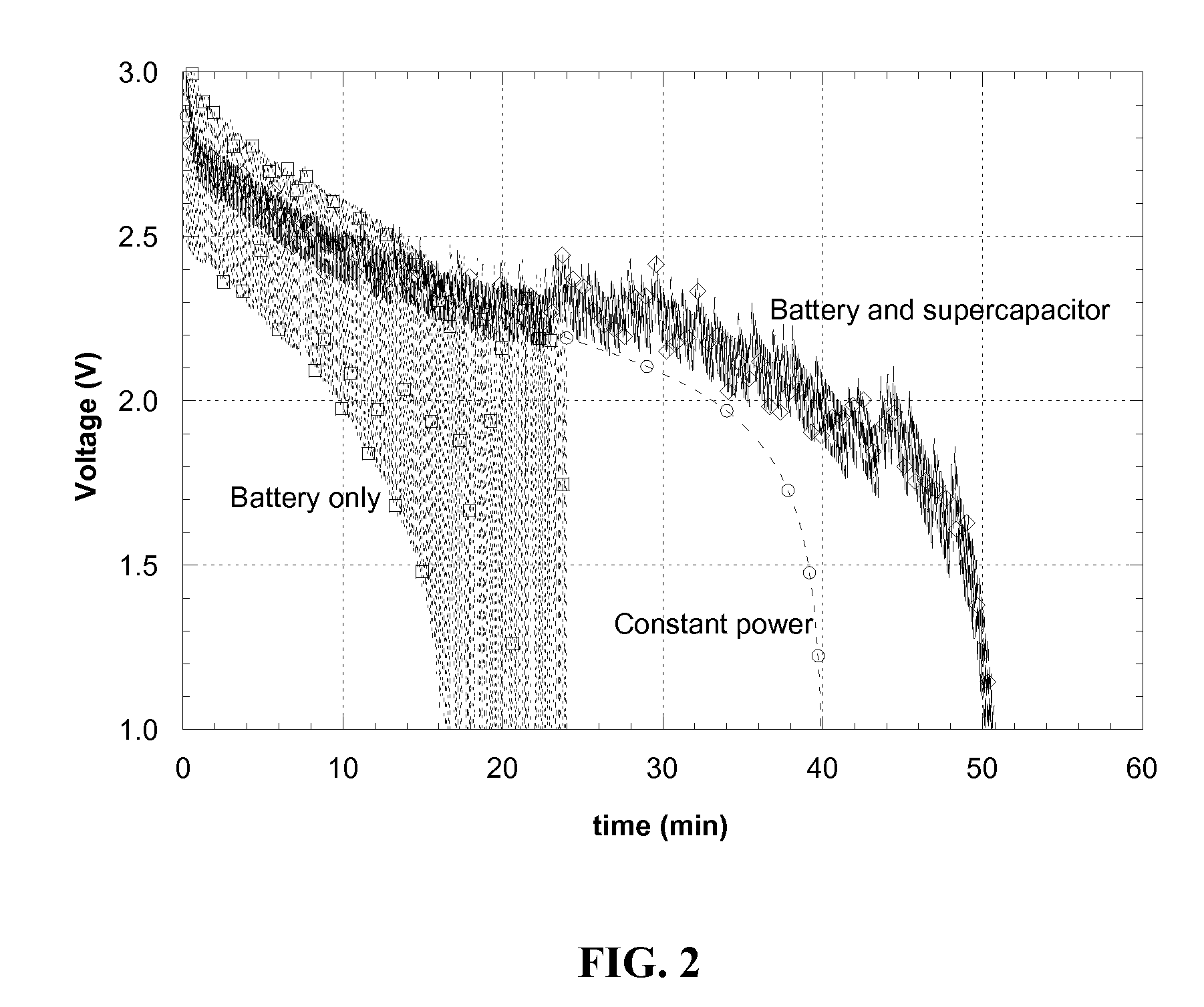System for Energy Harvesting and/or Generation, Storage, and Delivery
a technology for energy harvesting and/or energy generation, storage and delivery, applied in secondary cell servicing/maintenance, greenhouse gas reduction, instruments, etc., can solve the problems of increasing operating costs, system inherently limited, and often prohibitive levels, and achieve the effect of effective storage charg
- Summary
- Abstract
- Description
- Claims
- Application Information
AI Technical Summary
Benefits of technology
Problems solved by technology
Method used
Image
Examples
Embodiment Construction
[0032] The system of the present invention is a compact long lifetime power source which will enable the implementation of many applications, including but not limited to wireless network systems, that will no longer require battery changes or replacement. The present invention preferably comprises several components including energy storage (including but not limited to batteries and supercapacitors), energy harvesting and / or generation sources (including but not limited to vibrational (piezoelectric, capacitive or inductive), thermal (thermoelectric), radioisotope (betavoltaic), solar (photovoltaic), fuel cells, microcombustion, or biochemical sources), and ultra-low power electronics for functions including but not limited to charging of energy storage devices, power conditioning, rectification, power management, monitoring state of charge, and / or voltage step-up. The present invention may be configured using different combinations of the above components depending on the intende...
PUM
 Login to View More
Login to View More Abstract
Description
Claims
Application Information
 Login to View More
Login to View More - R&D
- Intellectual Property
- Life Sciences
- Materials
- Tech Scout
- Unparalleled Data Quality
- Higher Quality Content
- 60% Fewer Hallucinations
Browse by: Latest US Patents, China's latest patents, Technical Efficacy Thesaurus, Application Domain, Technology Topic, Popular Technical Reports.
© 2025 PatSnap. All rights reserved.Legal|Privacy policy|Modern Slavery Act Transparency Statement|Sitemap|About US| Contact US: help@patsnap.com



